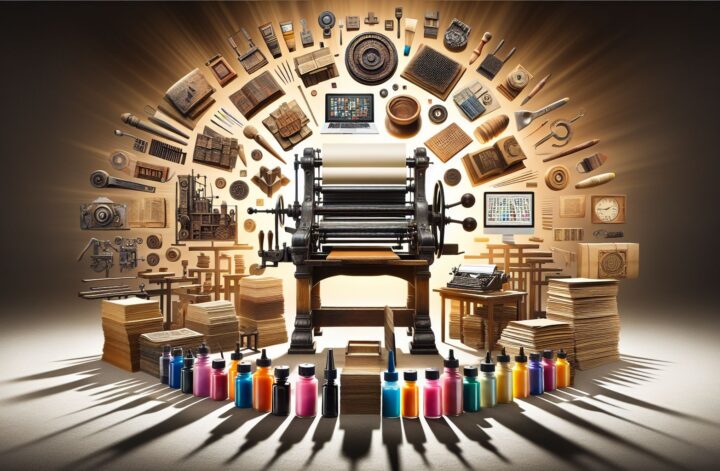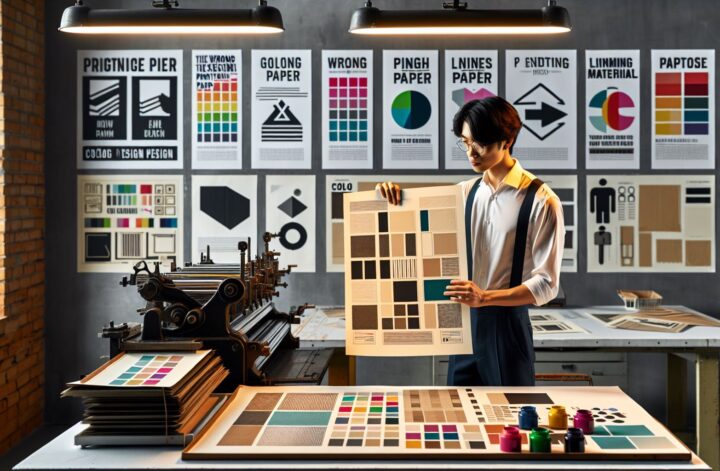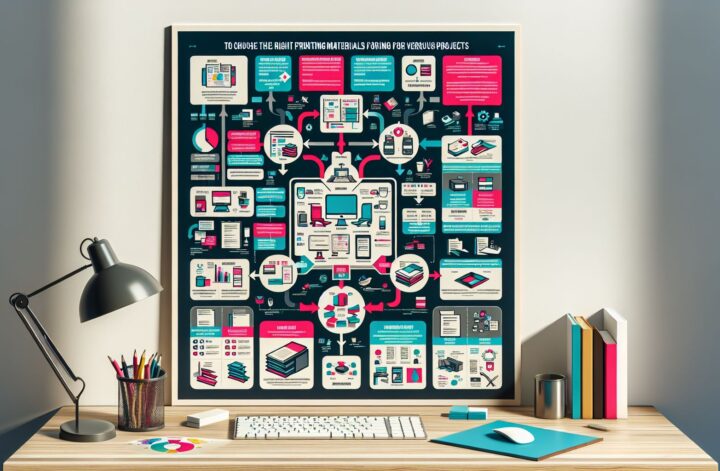Printing materials play a crucial role in the world of printing and design. From paper to ink to speciality materials, each component contributes to the final product’s quality and appearance. Choosing the right printing materials can make a significant difference in the outcome of a project. In this article, we will explore the various types of printing materials available, their characteristics, and how to choose the best materials for your printing needs.
Types of Printing Materials
1. Paper
Paper is the most common and widely used printing material. It comes in various sizes, weights, and finishes, each suited for different types of projects. For example, glossy paper is ideal for vibrant, colorful prints, while matte paper provides a more subtle, professional look. The weight of the paper also affects its durability and thickness, with heavier paper being more robust and suitable for printing brochures or business cards.
2. Ink
Ink is another essential printing material that comes in various types, including dye-based and pigment-based inks. Dye-based inks are more vibrant and affordable, making them suitable for everyday printing tasks. On the other hand, pigment-based inks are more durable and long-lasting, making them ideal for archival prints and documents. When choosing ink for your printing project, consider factors such as color accuracy, longevity, and cost.
3. Speciality Materials
Speciality materials include a wide range of printing substrates beyond paper, such as vinyl, fabric, and metal. These materials offer unique printing capabilities and applications, from creating waterproof banners to printing on textured surfaces. Speciality materials can add a creative touch to your projects and make them stand out from the crowd. However, these materials may require specific printing techniques and equipment, so be sure to consult with a printing professional before using them.
Characteristics of Printing Materials
When selecting printing materials for your project, it is essential to consider their characteristics to achieve the desired outcome. Some key factors to keep in mind include:
- Color reproduction: Different materials may affect how colors appear in the final print. For accurate color reproduction, choose materials that are compatible with your printer and ink type.
- Durability: The durability of printing materials is crucial for long-lasting prints that withstand handling and environmental conditions. Consider factors such as water resistance, fade resistance, and scratch resistance when selecting materials.
- Texture and finish: The texture and finish of printing materials can impact the look and feel of the final print. Choose materials that complement the design aesthetic and achieve the desired visual impact.
Choosing the Right Printing Materials
Selecting the right printing materials for your project can be a daunting task, given the wide range of options available. Here are some tips to help you choose the best materials:
- Understand your project requirements: Consider the purpose, size, and desired outcome of your project to determine the most suitable materials.
- Consult with a printing professional: Printing experts can provide valuable insights and recommendations on the best materials for your specific needs.
- Test different materials: Before committing to a large printing project, test different materials to compare their performance and suitability for your design.
By following these tips and considering the characteristics of printing materials, you can ensure a successful and visually impactful printing project.
Conclusion
Printing materials are an essential component of any printing project, influencing the quality, appearance, and durability of the final product. Understanding the types and characteristics of printing materials can help you make informed decisions when selecting materials for your projects. By choosing the right materials and considering factors such as color reproduction, durability, and texture, you can achieve professional results that meet your design goals. Next time you embark on a printing project, take the time to explore the world of printing materials and discover the endless possibilities they offer.



